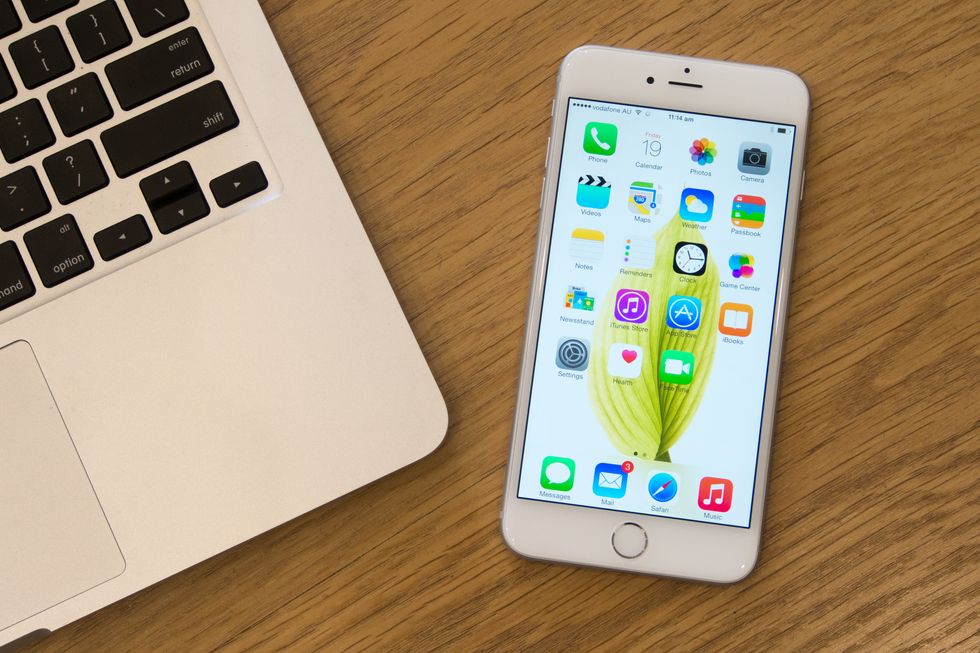Human communication has evolved tremendously in society over the past few decades. From the United States Postal System in 1775, to the creation of the telegram, then the landline phone, touch tone phone, and eventually cordless phones, e-mails, and now instant messaging and Snapchat—technological progress has become one of the human race’s largest accomplishments. These changes have also influenced business; food can be ordered with a few clicks of the thumb, students can e-mail professors within minutes, and even checks can be deposited in bank accounts with a specific fingerprint.
Collectively, all of this has been made simpler by one such invention- the iPhone. The iPhone has changed the way society views cell phones-- no longer are they used for simply calling and receiving calls, but they now hold entire contact books with hundreds of phone numbers and emails, dozens of apps that are used for entertainment, networking, etc., and as aforementioned, access to entire savings and checking accounts. The iPhone is a cultural object that has shaped not only individual people’s lives, but the entire world.
Wendy Griswold, author of Cultures and Societies in a Changing World, defines a cultural object as “a socially meaningful expression that is audible, visible, or tangible or that can be articulated”. Griswold also writes that a cultural object “tells a story”. The iPhone fits this definition in the sense that it is symbolic of how the culture of entire countries has changed over time. Now because of this creation people have the ability to send lengthy messages within seconds across continents. With the tap of a button, someone in one country can display his or her face on a screen and simultaneously view a family member’s face who is in a completely different country and share a conversation for as long as they want.
These advancements have changed how humans view communication. Because of this technological advancement towards greater speed and efficiency, people have fewer and fewer hardships contacting others. People’s expectations about the response rate of others and how long it takes a message to send have been raised because of the simple fact that in most cases, the sender can see if a receiver has read a message, and also if that receiver is typing a response or ignoring them. The mystery of human communication across distances and not knowing whether the message was received or intercepted, no longer exists partially because of creation of the iPhone.
In 2000, an Apple worker named John Casey proposed the idea of a phone combined with an iPod, but it was Steve Jobs (1955-2011) who first initiated the design of a touch screen phone with the ability to do more than simply call and text; Apple branded this invention the “iPhone”. The first one was released in July 2007 with the ability to support applications via Safari internet search engine, which would allow the condensing of information and mobility in one device.
In terms of an audience of receivers, the iPhone was not geared towards one type of individual. Although beneficial for businesspeople with a multitude of contacts and information that could now literally be held at their fingertips, the device could potentially be used by anyone with an urgent need for communication and access.
However, the iPhone attracted a more affluent demographic because of its price, given that users would have to afford the costs that come with owning the device. When someone is seen holding an iPhone, it is generally a culturally-created sign of wealth and privilege. The advent of the iPhone also changed the age at which teenagers begin using a phone. Ultimately, the iPhone is carried by children as young as twelve and thirteen years old across the nation, and represents a certain status that is increasingly sought after among high school and college campuses. No one wants to receive a “green text message,” indicating that the person with whom they are texting is not an iPhone user.
Griswold also defines the social world in which a cultural object is created, as the “economic, political, social, and cultural patterns and exigencies that occur at any particular point in time”. This element was described above and includes the entire planet which has been affected by the iPhone, specifically those of somewhat higher status. The social world of the iPhone can also be described as one in which people are constantly yearning for something faster, more advanced, and smarter. To appease its consumers, Apple has created 14 different iPhone versions within a 10-year timespan, further evidence of the social world’s constant desire for expedited technological evolution.
Griswold ties each of the components discussed in this article into a concept called the Cultural Diamond. The Cultural Diamond consists of the four aspects previously mentioned: the cultural object-- the iPhone; the creator-- Steve Jobs and Apple; the receiver-- businesspeople, higher class adults, and an increasingly younger population of teenagers; and the social world-- an overarching group of people from privilege and relative wealth who continuously provide a reason for Apple to come out with a new iPhone yearly.
In relation to the Cultural Diamond, all of these components are related and interact with one another to form an object that has representation or purpose that can be interpreted in one way or multiple ways by an audience within society. Overall, the Cultural Diamond organizes these four components very well and allows us to analyze their connection and how they have impacted modern society. The shaping of humanity through the cultural object of the iPhone is evident when a couple is at dinner and both of them are checking Facebook, or when a group of people is waiting on a bus and have their heads down checking work emails instead of conversing. The cultural diamond is not stagnant, but rather cultural objects are constantly changing.
With this type of growth from an Apple product resulting from merely ten years, it is unforeseeable where civilization will be in another ten years.
















